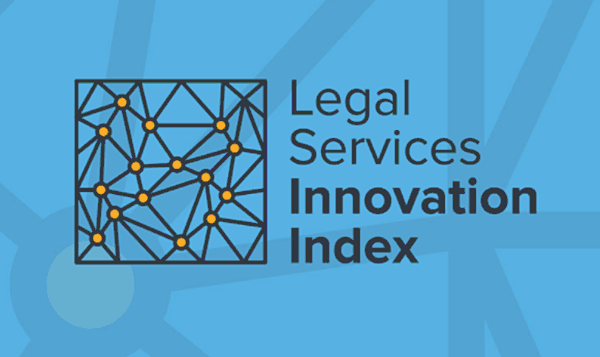Michigan State institute tracks law school innovation

The Legal Services Innovation Index now measures law schools as well as law firms.
A Michigan State University initiative launched Nov. 2 tracks legal services innovations at 38 law schools.
The Law School Innovation Index recognizes 10 technology and legal-service delivery disciplines taught in law schools. Daniel W. Linna Jr., a resident professor at Michigan State’s College of Law and director of its LegalRnD center, downplays his finding that MSU is one of two schools that teach all 10.
“The index isn’t intended to rank law schools but to describe where they’re going,” Linna says. LegalRnD’s index of law-firm service innovations generated interest this summer. Linna defends his attempt to extend the concept to his own academic turf. “I don’t see anyone doing it and that’s why I’m doing it,” he says. “We don’t try to tell [other schools] what they should be doing.”
Among the 10 disciplines are project management, data analytics and technology basics. The other program teaching all 10 is Chicago-Kent College of Law at Illinois Tech. Its legal services institute has an MSU connection: Director Daniel Martin Katz co-founded LegalRnD’s predecessor lab.
“A crop of prospective law students are looking at schools right now,” Linna says. “The data shows a significant number of law schools have created a curriculum about legal information and technology. Students and alumni need information about an evolving marketplace.”
A data visualization shows the number of innovative legal-service disciplines taught at 38 law schools.
The schools encompass both high-profile law programs at Harvard and Stanford and a host of less-heralded programs from such schools as Northern Kentucky University’s Chase College of Law, which is not ranked in the most recent U.S. News & World Report college survey.
The MSU framework is billed as a prototype. One limitation is that the 38 schools studied are drawn from recognition in legal-tech blogs and other published sources, including the ABA Journal. A future iteration of the index might survey primary sources, such as course descriptions from all law schools, to search for innovators that aren’t among what Linna calls “the usual suspects.”
Another difficulty emerged in finding ways to count innovation. The 38 schools include 19 with institutes related to legal-services technology, 10 with J.D. course concentrations and eight with a CLE or continuing education emphasis.
“How are you using project management, data and technology to get better results?” Linna asks. Courses such as Law and Technology may simply address practice specialties rather than legal-service issues. The most common “Law and …” courses involve cybersecurity (34 schools), entrepreneurship (30) and e-discovery (26).

Professor in residence Daniel J. Linna Jr. directs the LegalRnD center at Michigan State University School of Law.
The indexing project follows the business axiom that what gets measured gets done. Linna wants law schools to engage with engineering, design, project management, computer science and other disciplines to show students how to solve intractable “wicked problems” such as access to justice.
“We talk about the law being something that’s very bespoke, and we spend very little time working on the business of law and thinking about being more client-centric,” Linna says. “Why is it we’re studying Uber and how it’s disrupting an industry? Why aren’t we disrupting our own industry?”
Technologists are pushing the legal envelope, notably at last month’s Massachusetts Institute of Technology forum on artificial intelligence technology and blockchain law. “MIT’s involvement should really capture the attention of law schools,” Linna says. “They’re trying to solve problems. It’s the lawyers who need to show they can bring value to that discussion.”
Law firms can play such a role not only in their academic partnerships, Linna says, but in recruiting graduates who have thought about creative solutions. Students in turn should be thinking about innovation in making themselves stand out in a competitive job market.
“In every other discipline, it’s been people, process, data and technology that have brought innovation,” Linna says. “Why would legal be any different?”



